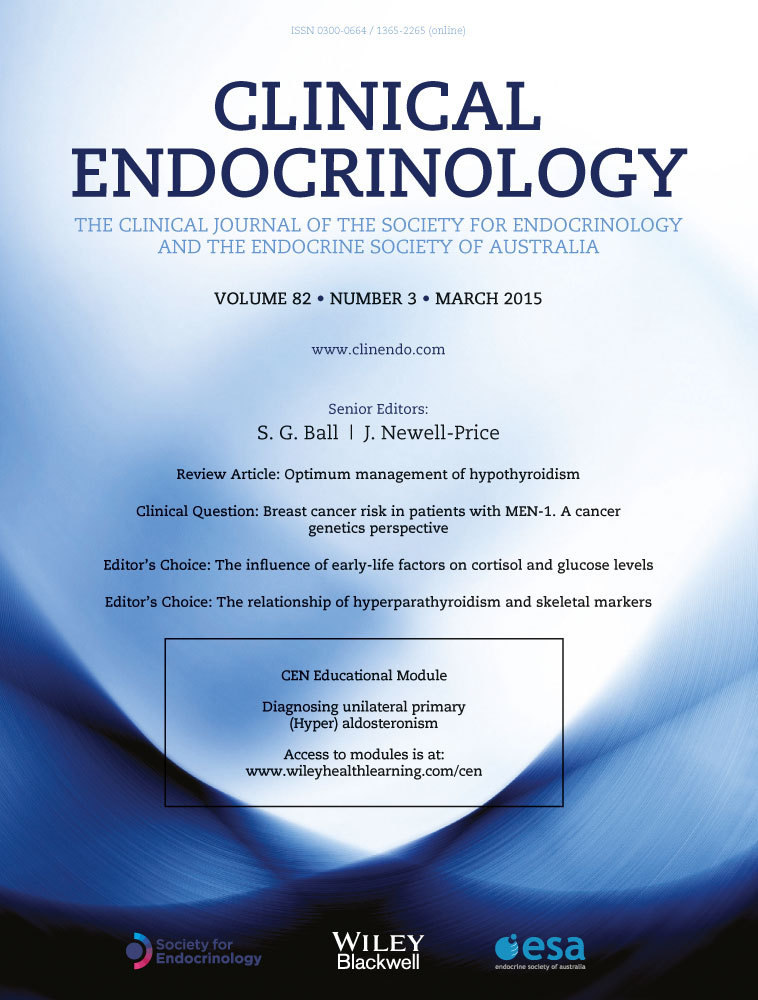Lung metastases from differentiated thyroid carcinoma: prognostic factors related to remission and disease-free survival
Summary
Objective
Distant metastases, although rare, account for maximum disease-related mortality in differentiated thyroid cancer (DTC). Lungs and bones are the most frequent sites of metastases. We sought to identify the prognostic factors in adult DTC patients presenting with pulmonary metastases at initial diagnosis.
Design
Retrospective cohort study.
Patients
From the medical records of 4370 patients, 200 patients aged more than 21 years who were identified to have pulmonary metastases at the time of diagnosis were included in the analysis.
Results
The sites of metastases were lungs alone in 133 (67%) patients, and additional sites in remaining 67 (33%) patients were as follows: bones in 59, liver in 4, brain in 2 and both bone and liver in two patients. During the mean follow-up of 61 months (range, 12–312 months), 76 patients achieved remission, 121 (60·5%) patients had biochemically and/or structurally persistent disease and three patients showed disease progression. Multivariate analysis revealed presence of macro-nodular (chest X-ray positive) pulmonary metastases and concomitant skeletal metastases as independent factors decreasing the likelihood of remission. Of the 76 patients with remission, 16 (21%) developed subsequent recurrence. Patient age >45 years and follicular histopathology were independently associated with greater hazards of developing recurrence.
Conclusion
This study suggests that the patients with macro-nodular lung metastases and/or concomitant skeletal metastases have reduced odds of achieving remission. Moreover, significant number of patients recur even after complete remission with RAI treatment, hence strict surveillance is recommended especially in patients with age >45 years and/or with follicular histology of DTC.




